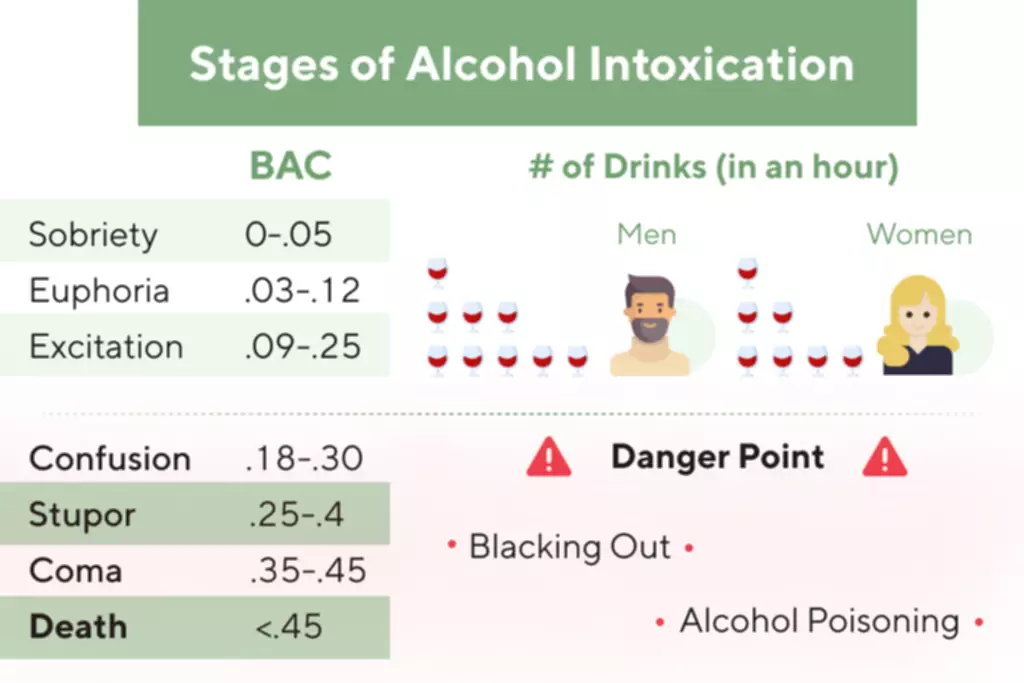The dopamine system and alcohol dependence PMC
When comparing the neural response of light (consuming ~0.4 drinks per day) and heavy (consuming ~5 drinks per day) drinkers to alcohol cues, light drinkers have been found to have a higher BOLD signal in VS, while heavy drinkers show an increased BOLD signal in DS [102]. The DS response in the heavy drinkers suggests the initiation of a shift from experimental to compulsive alcohol use during which a shift in neural processing is thought to occur from VS to DS control [103]. However, such cross-sectional studies are unable to establish whether such differences are prodromal or consequential of alcohol exposure. A recent longitudinal study in adolescents showed that blunted BOLD response to non-drug reward was predictive of subsequent problematic alcohol use [104]. These results suggests that certain functional differences in reward processing may predate problematic alcohol consumption. Alcohol use is typically initiated during adolescence, and studies have found that alcohol can impact neurodevelopmental trajectories during this period.

Distinct sub-second dopamine signaling in dorsolateral striatum measured by a genetically-encoded fluorescent sensor
For the McGill study, researchers recruited 26 healthy social drinkers (18 men, 8 women), 18 to 30 years of age. The higher-risk subjects were then identified based on personality traits and having a higher tolerance to alcohol (they did not feel as drunk despite having drunk the same amount). Finally, each participant underwent two positron emission tomography (PET) brain scan exams after drinking either juice or alcohol (about 3 drinks in 15 minutes). Wernicke’s encephalopathy is an acute, yet potentially reversible, neuropsychiatric disorder caused by a deficiency (or depletion) in thiamine (thiamine pyrophosphate) caused by chronic alcohol use. Other causes include gastric bypass surgery, gastric and colon cancer, hyperemesis gravidarum, long-term parenteral feeding, and poor nutrition.
Two-bottle choice 24-h intermittent access (IA) alcohol consumption procedure
Following screening, participants were given up to 30 min to consume the amino acid-containing beverage (see “Dopamine Depletion Procedure”). Participants were dismissed after being offered a high protein snack and were compensated for alcohol and dopamine participation after completing the second visit. As mentioned previously, in addition the affecting the dopamine system directly, alcohol interacts with the mesolimbic dopamine system indirectly via several other neurotransmitters.
Presynaptic regulation of dopamine release by dopamine and acetylcholine
When we’re repeatedly exposed to pleasure-producing stimuli — social media, sugar, alcohol or any number of readily-available substances — our bodies adjust. Then we need more on repeated use, just to feel a the marginal pleasure boost – and, eventually, just to feel “normal.” At any moment, someone’s aggravating behavior or our own bad luck https://ecosoberhouse.com/ can set us off on an emotional spiral that threatens to derail our entire day. Here’s how we can face our triggers with less reactivity so that we can get on with our lives. Christopher Bergland is a retired ultra-endurance athlete turned science writer, public health advocate, and promoter of cerebellum (“little brain”) optimization.
Excessive alcohol use is responsible for 2.3 million years of potential life lost (YPLL) annually, or an average of about 30 years of potential life lost for each death. In 2006, there were more than 1.2 million emergency room visits and 2.7 million physician office visits due to excessive drinking. The economic costs of excessive alcohol consumption in 2006 were estimated at $223.5 billion. A study released on August 2, 2013 found that those who are energized by alcohol have a hyperactive dopamine response to alcohol and are genetically predisposed to drink more heavily. Into Action is an addiction treatment center specializing in personalized treatment for drug and alcohol abuse, conveniently located in Houston, Texas and led by experienced master’s level counselors and medical professionals.
Stay on top of latest health news from Harvard Medical School.
This underscores the need to examine sex- and gender-related alterations on brain function and structure in alcohol use; improving our understanding of these effects may enable tailoring of pharmacotherapeutic treatments to improve outcomes. Each of us has a different genetically determined dopamine baseline, which changes based on various behaviors, thoughts, and actions, including ingesting substances that can temporarily modulate our dopamine baseline. Like most optimal physical functioning, sufficient sleep and nutrition influence dopamine levels (Nolan et al., 2020).
- As mentioned above, it has been hypothesized that the chronic intake of alcohol induces a dopamine deficit state in the brain reward system and that this dysfunction may drive craving and relapse to drinking [101, 18, 19].
- However, such cross-sectional studies are unable to establish whether such differences are prodromal or consequential of alcohol exposure.
- When the dopaminergic neurons are activated, the resulting change in the electrical charges on both sides of the cell membrane (i.e., depolarization) induces dopamine release into the gap separating the neurons (i.e., the synaptic cleft) through a process called exocytosis.
- Some neurotransmitters produce longer lasting changes, contributing to processes such as learning and memory.
- Alcohol might also increase inhibitory neurotransmission by increasing the activity of inhibitory neuromodulators, such as adenosine.
- When consuming alcohol, dopamine levels are raised just as high as they would with other drugs.
4. Resting State Functional Connectivity
How Alcohol Affects The Brain and Leads to Dependence – The Recovery Village
How Alcohol Affects The Brain and Leads to Dependence.
Posted: Fri, 08 Sep 2023 07:00:00 GMT [source]




